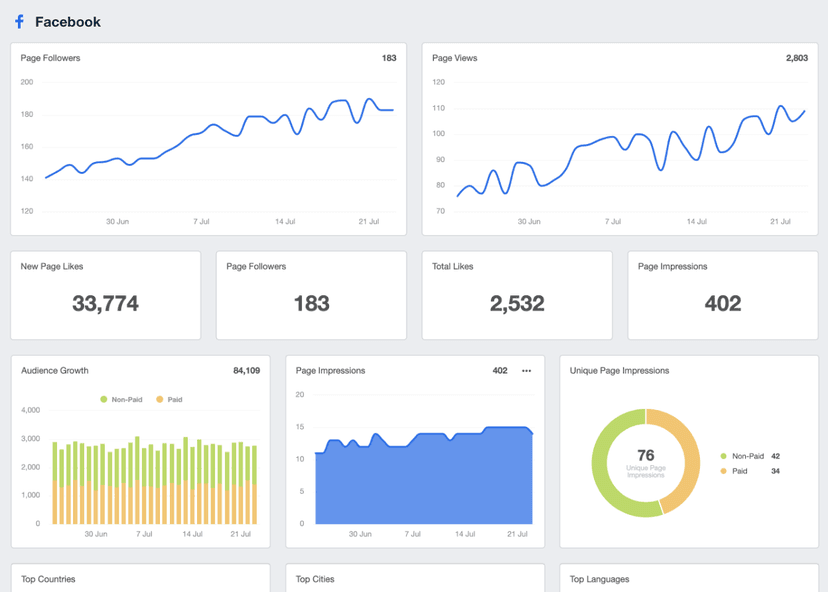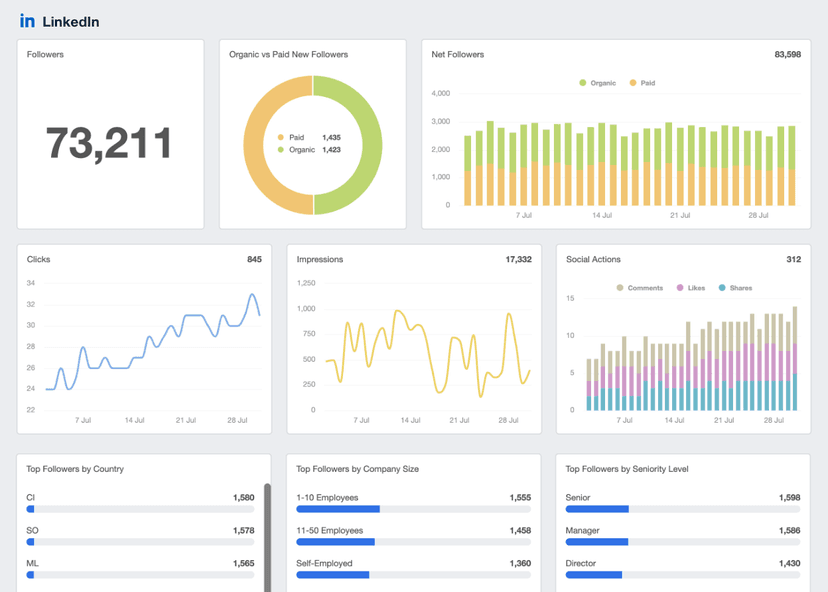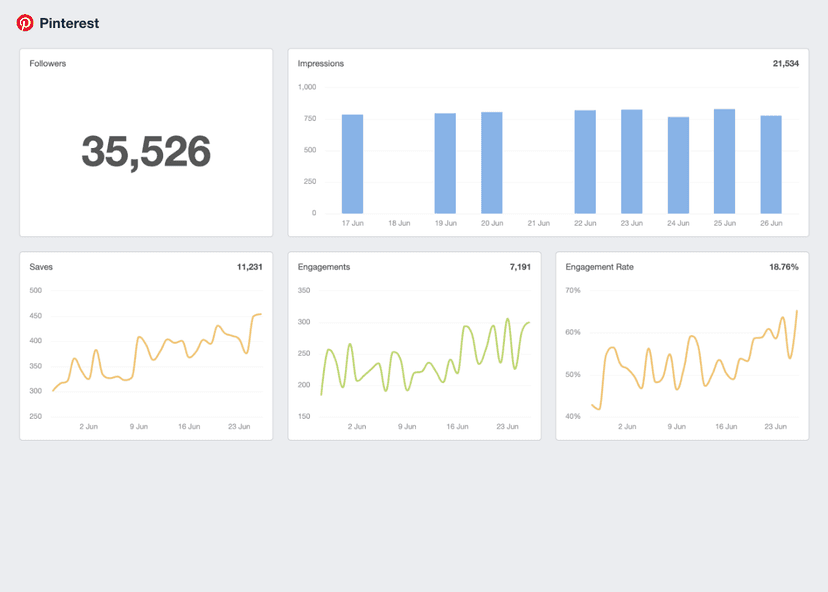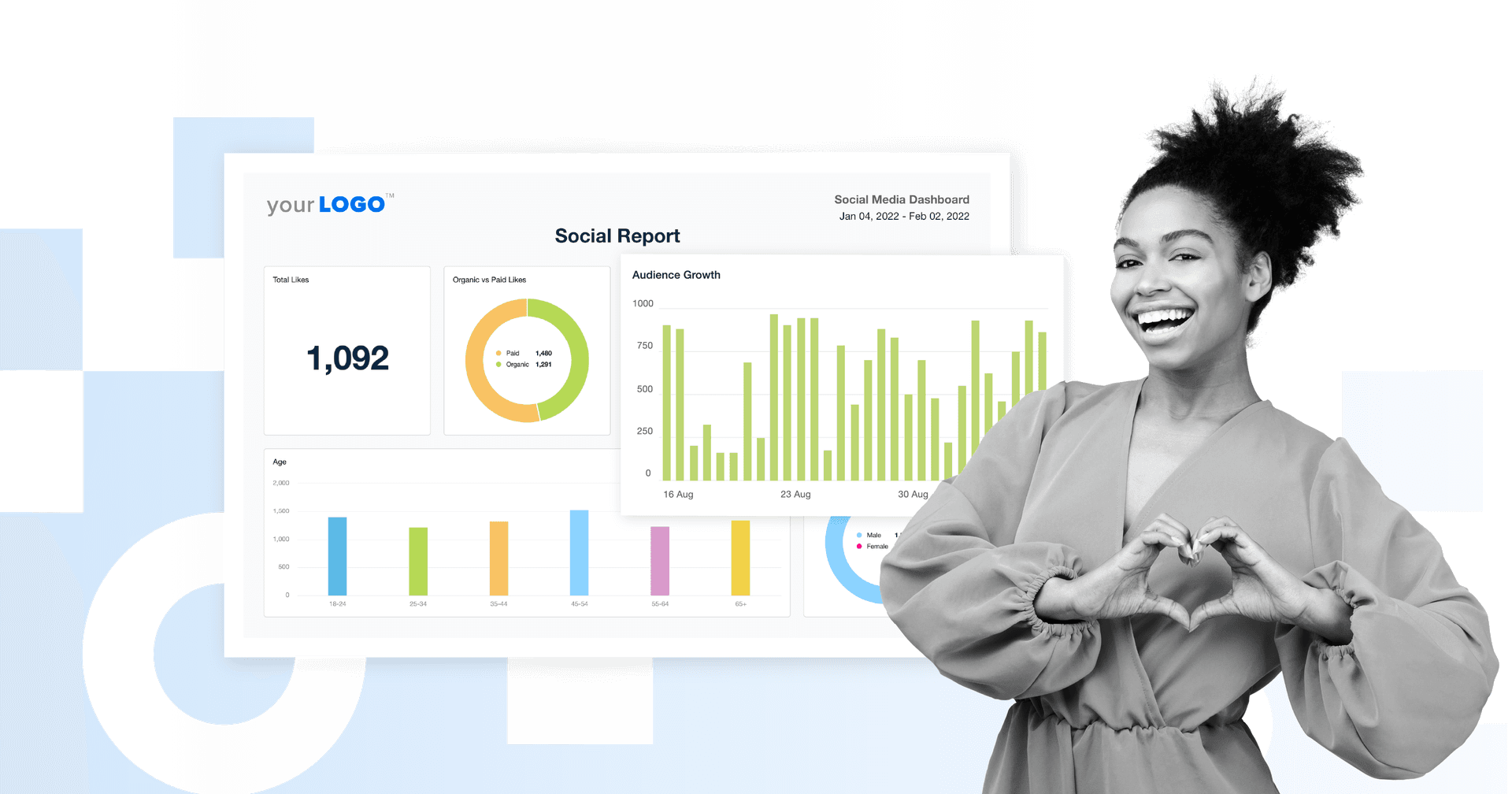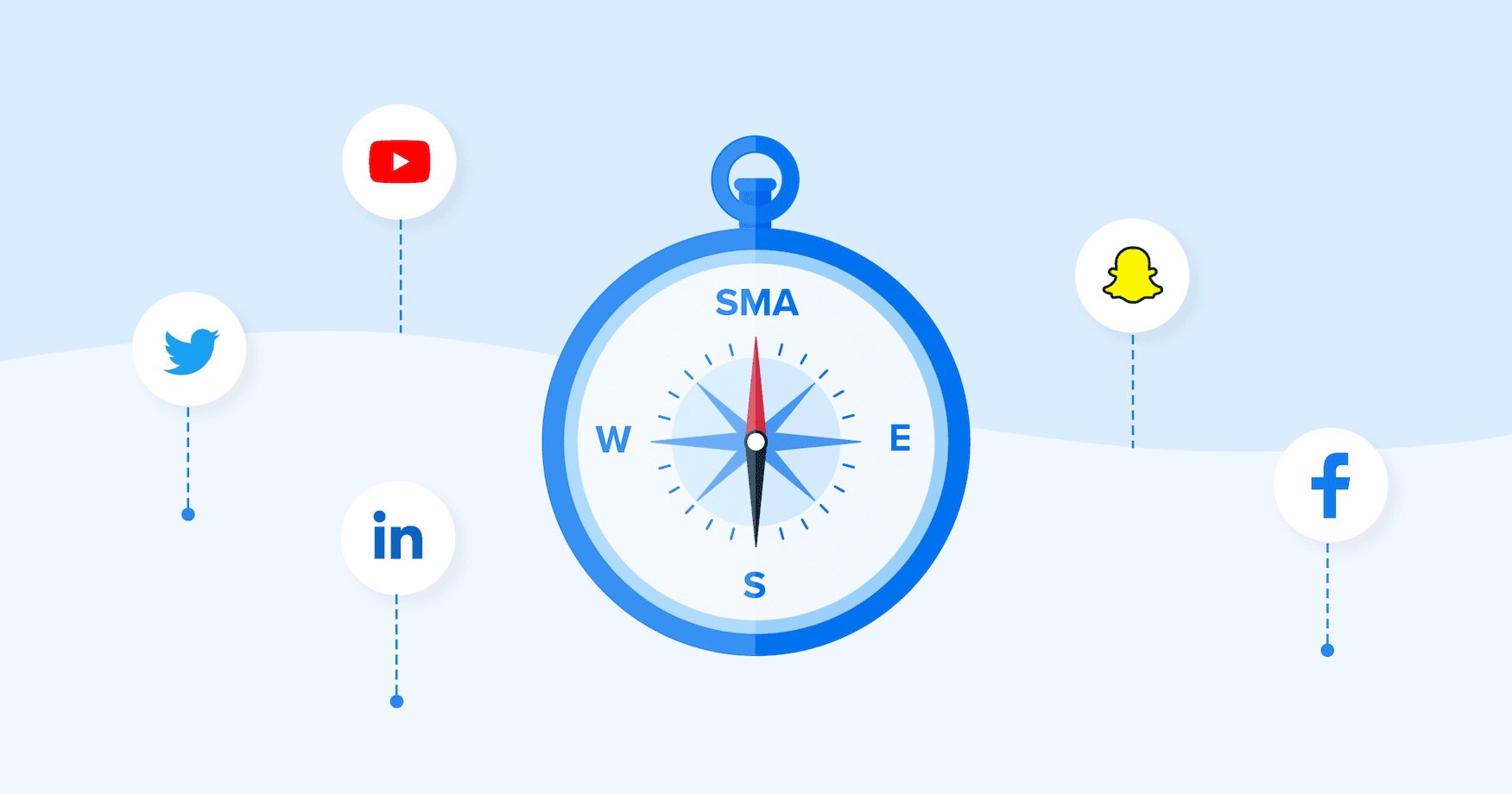Reach
Audience Size
Assess a campaign's visibility by identifying the number of distinct users reached.
Ad Frequency Strategy
Adjust ad frequency to get views from unique users without oversaturation.
Platform Comparison
Assess Reach across platforms to identify channels with the most traction.
Budget Allocation
Decide where to allocate budget and resources based on marketing Reach.
Why Reach Is Important
Reach is a critical metric for understanding a campaign’s visibility as it reveals how many unique users are exposed to a marketing message. More specifically, high Reach means more users are aware of the brand on social media. It may lead to increased Engagement through Likes, Comments, and Shares.
In addition, this metric helps identify what formats and topics resonate with the audience most. For best results, focus on creating relevant content that provides value–it may even remove the need for a heavy advertising campaign. Also, use Reach to ensure ads are reaching the right demographics. If not, it may mean adjustments are needed, such as increasing budget or refining targeting parameters.
In summary, Reach is useful for assessing a campaign’s exposure and whether it’s displayed to the right potential audience.
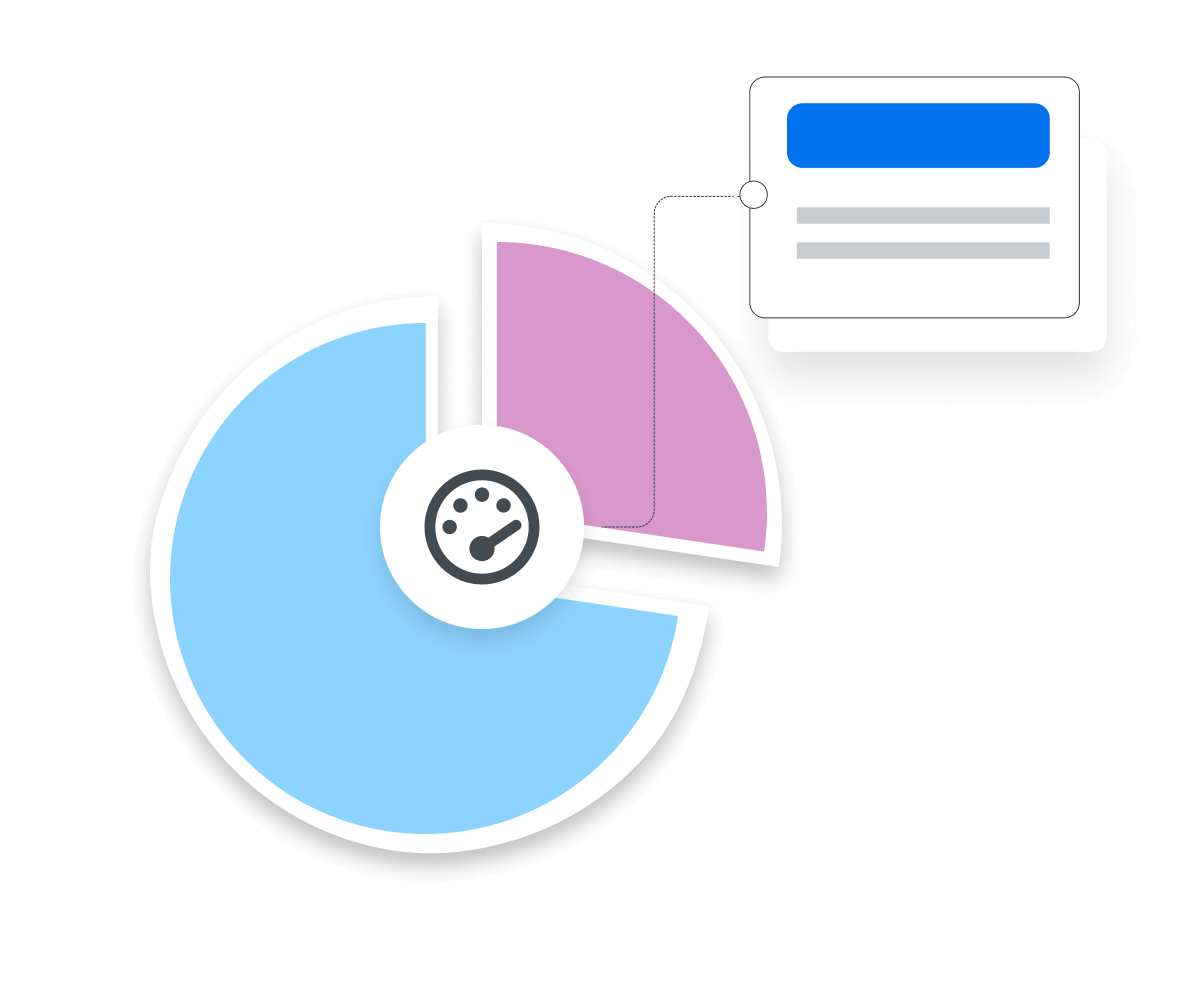
Stop Wasting Time on Reports. Get Marketing Insights in Minutes With AgencyAnalytics.
How Reach Relates To Other KPIs
Reach plays a foundational role in shaping other KPIs by determining the potential audience size. That’s because high Reach expands the potential for increased interactions, which may lead to more organic shares and traction.
When content reaches a significant number of unique users, there may also be an uptick in Click-through Rate (CTR). There’s a snowball effect here, too–a higher CTR could lead to more user exploration and Conversions down the line (e.g., more online sales or app downloads). Essentially, Reach sets the stage for how successfully other KPIs perform. Once a sizable target audience exists, there’s a better chance of favorable, all-around results.
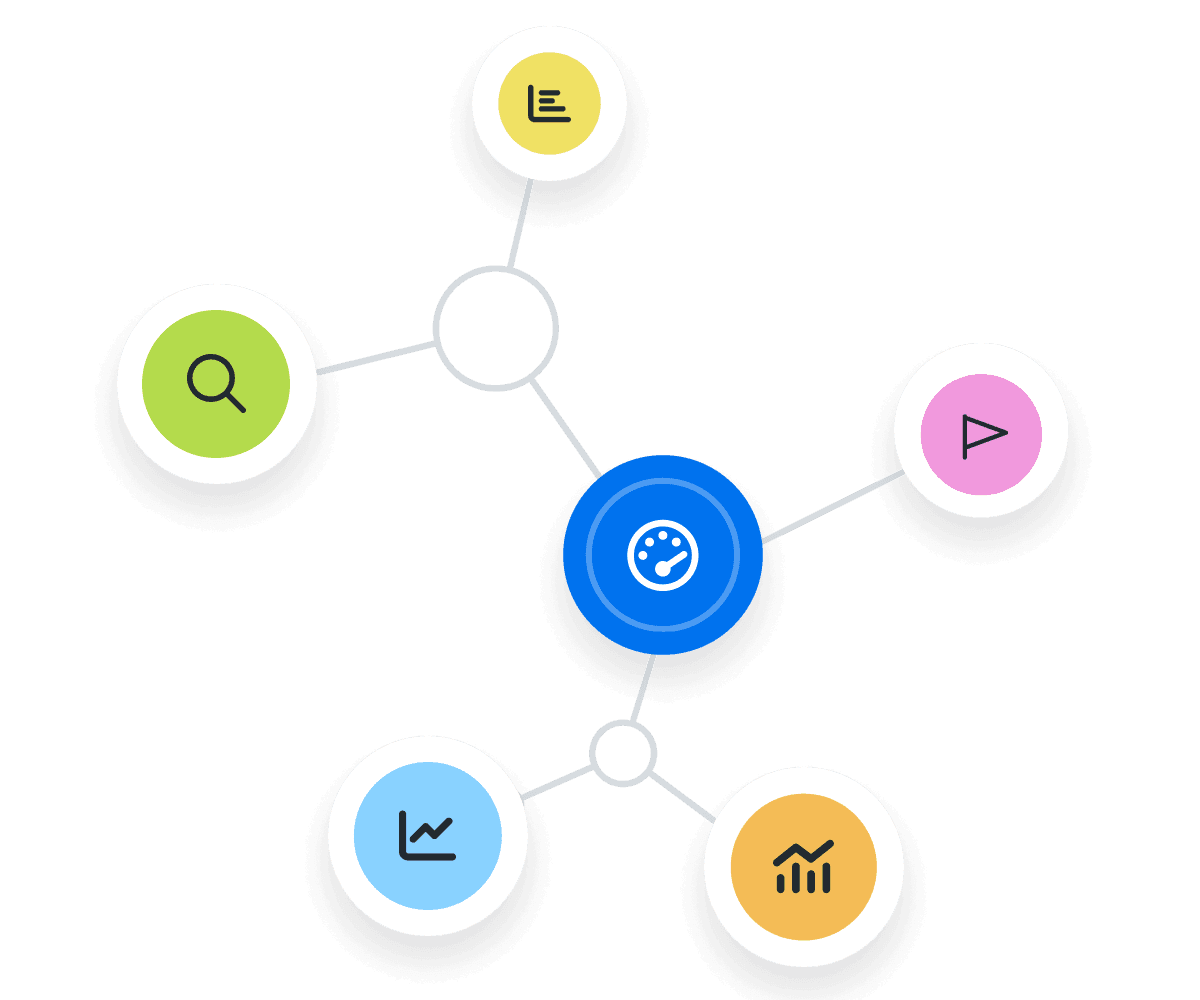
How To Calculate Reach
Many platforms–like Facebook, Instagram, and Google Ads–automatically track Reach. While there’s no manual way to do it, here’s how it’s calculated for further context:
Reach = Impressions ÷ Frequency
Reach and Impressions are closely related, but they’re quite distinct terms. Simply put, marketing Reach refers to how many unique individuals were exposed to the content (like a social media post or ad). On the other hand, Impressions measure the total times it was displayed, counting repeats to the same users. Therefore, Impressions divided by Frequency–like the formula above–reflect the breadth of exposure versus repeat displays.
Reach Formula Example
What Is Considered Good Reach?
Good Reach generally means covering a solid portion of the intended audience. It boils down to getting the message noticed by a significant number of users without oversaturation. For digital marketing campaigns focused on awareness, reaching around 50 to 70% of the target audience is considered effective. Essentially, it helps build recognition across a large group.
When the goal is to drive actions like Clicks or Conversions, reaching a more active audience segment—roughly 20 to 30%—may yield better results. That’s because they’re more likely to take action or interact in some way.
What Is Considered Bad Reach?
Bad Reach typically means a campaign fails to connect with a meaningful portion of the target audience. Generally, reaching fewer than 10% of intended users means minimal exposure and limits the potential for brand recognition.
Additionally, if a campaign repeatedly reaches the same audience subset, there’s a risk of ad fatigue. Assessing whether a campaign reaches the right target audience is also important. If it doesn’t, the campaign may have a high Reach with minimal returns (e.g., a lack of qualified lead generation or low CTRs).
How To Set Reach Benchmarks and Goals
Start by identifying the primary purpose (e.g., building brand awareness) as this influences the Reach target. Review past campaign data to establish a baseline and use industry standards for context on typical performance.
Make goals realistic, measurable, and time-sensitive. For instance, “Increase social media Reach by 20% over the next quarter” provides clarity and can be tracked. Monitoring Reach alongside related Engagement metrics (e.g., likes, shares, comments) is also a good idea. This ensures that Reach goals align with desired user interactions.
Why Reach Matters to Clients
For clients, Reach indicates how many potential customers have seen their brand or message within a specific target audience. However, it's not just about reaching more people but reaching the right people. When Reach extends to a relevant demographic, it primes the campaign for better Engagement and Conversions. In other words, enough campaign visibility could actually translate to new customers and more business.
It also allows clients to evaluate the effectiveness of their marketing spend and make informed decisions. If a campaign isn’t receiving enough visibility, it may be a sign to increase budget or reallocate funds.
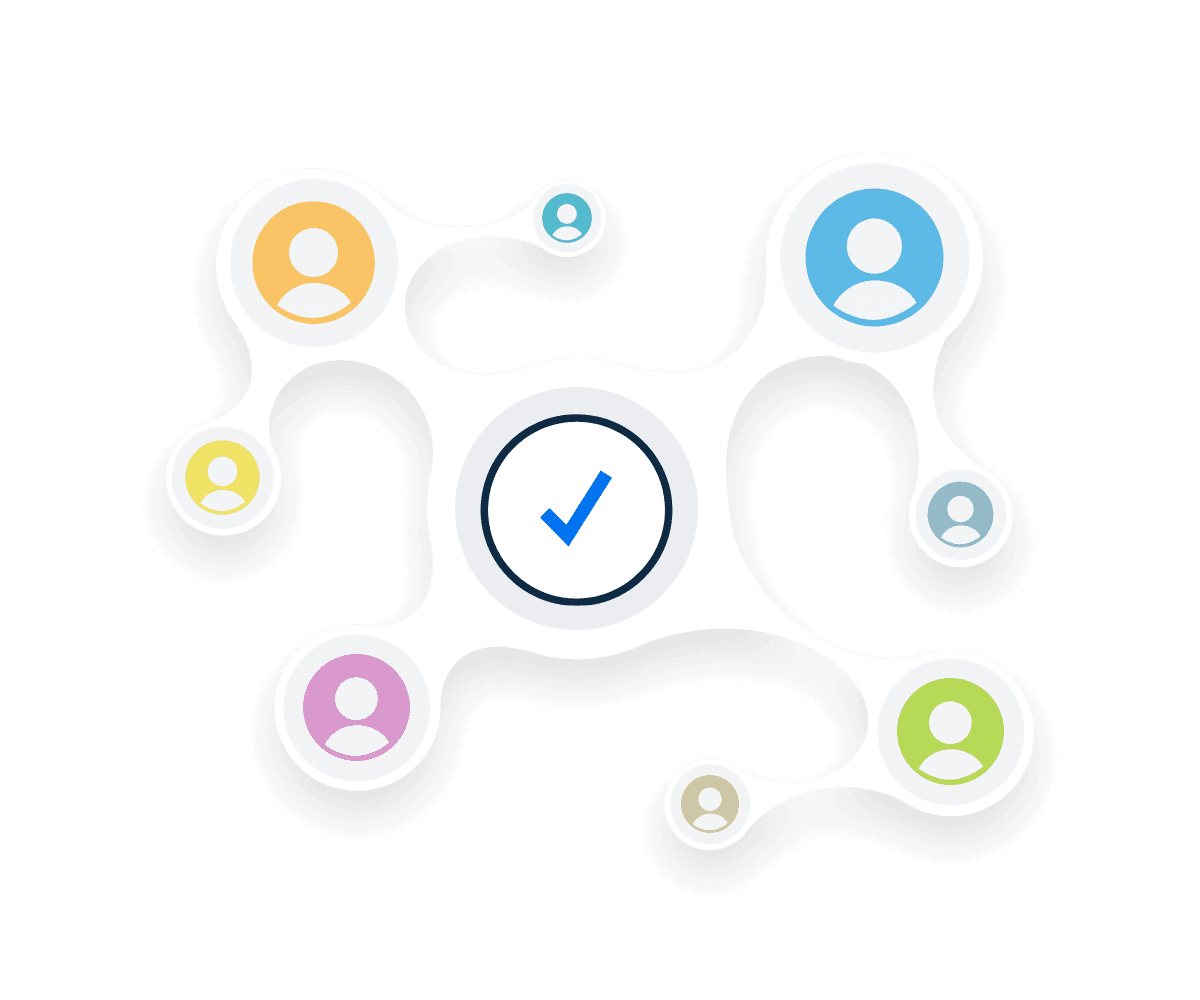
Why Reach Matters to Agencies
Reach matters to agencies because it directly impacts a client’s online visibility and campaign effectiveness. Higher Reach expands brand awareness, draws in potential customers, and improves the odds of Conversions.
Additionally, Reach also serves as a diagnostic tool. For instance, if Reach is high but Engagement remains low, it might suggest that a particular message isn’t resonating. In these cases, it helps agencies to uncover audience preferences and create content that’s truly impactful.
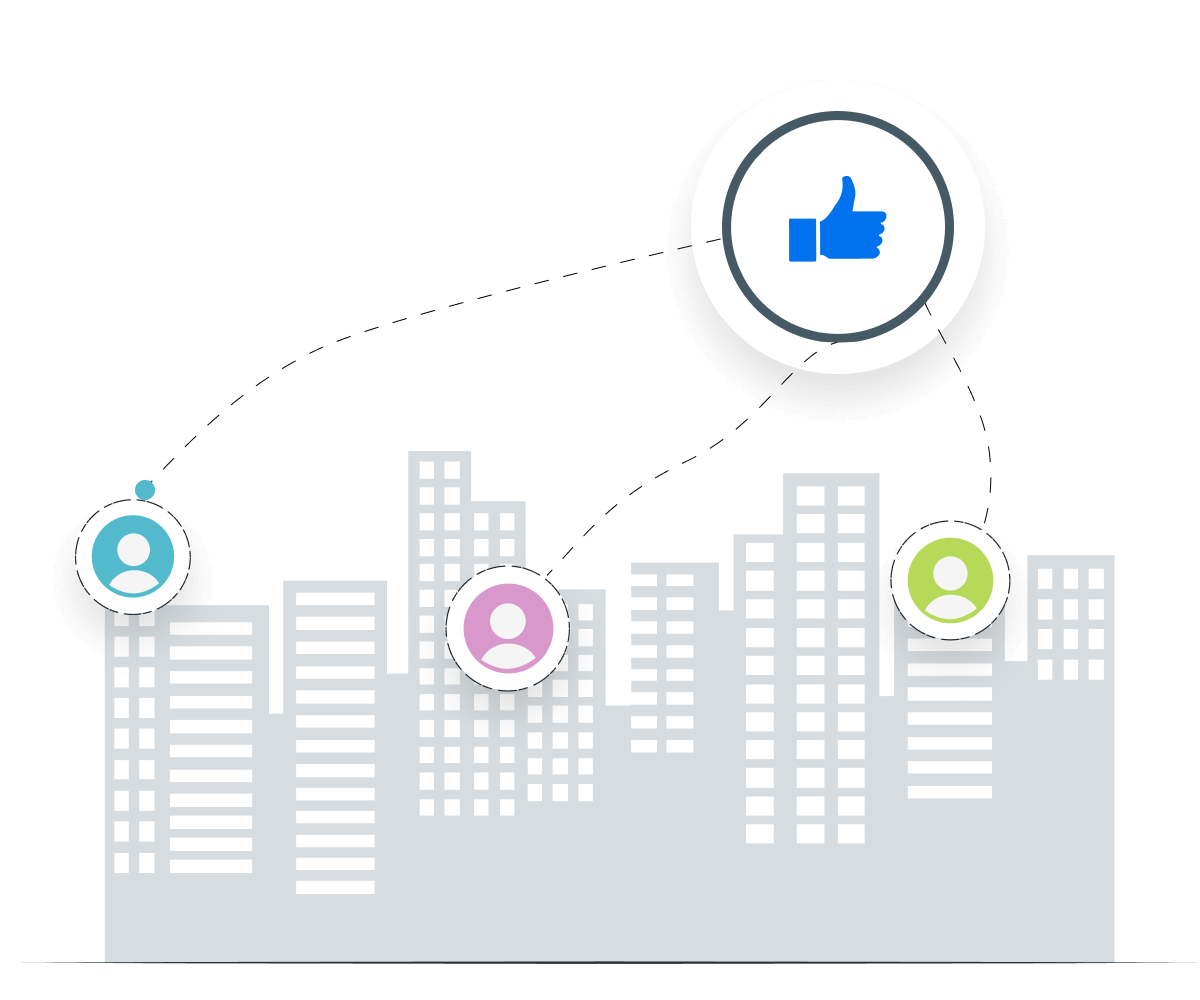
Discover the All-in-One Reporting Tool Trusted by 7,000+ Marketing Agencies
Best Practices When Analyzing and Reporting on Reach
Assessing Reach is key to understanding a campaign's impact. Follow these reporting best practices to communicate Reach clearly, refine strategies, and maximize brand visibility.
Ensure Data Accuracy
Use reliable tools to capture Reach data accurately, ensuring that numbers reflect actual audience exposure.
Use Visual Representation
Incorporate graphs or charts to translate Reach data into actionable insights. This makes these findings more digestible and easy to understand.
Analyze Over Time
Monitor Reach trends across consistent intervals to identify seasonal patterns, growth, or declines.
Compare Across Channels and Campaigns
Determine where audiences are most engaged (e.g., a Facebook Ad may have more visibility than a Google Ads campaign).
Provide Context
Share a detailed explanation of marketing Reach, showing how it relates to other metrics like Engagement and Conversions.
Align to Client Goals
Frame Reach data around each client’s broader goals to demonstrate impact (e.g., increased brand visibility).
Instagram Dashboard Example
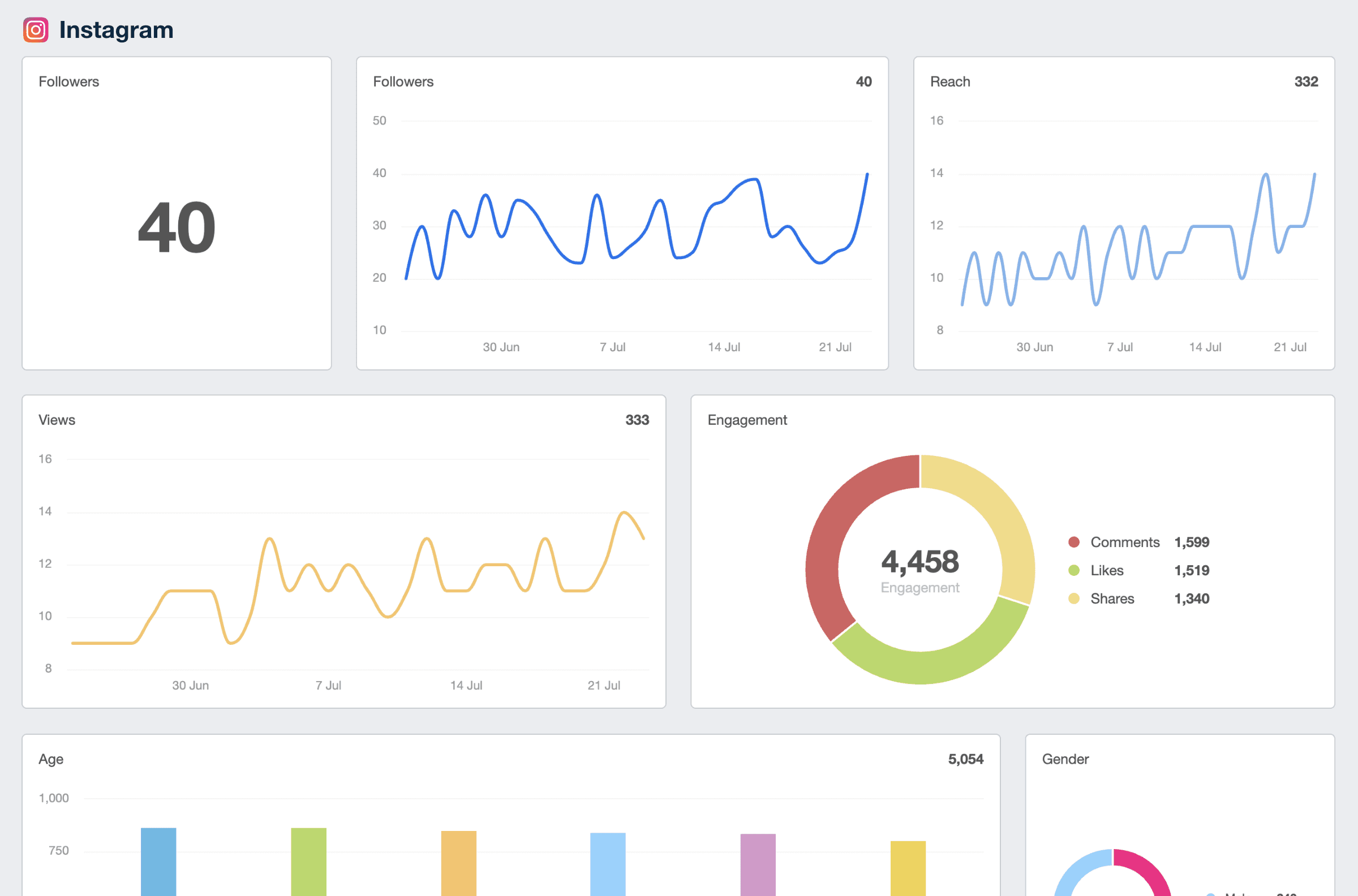
How To Improve Reach
Improving Reach is key to increasing brand exposure and engaging a wider audience. Here are actionable steps to enhance this metric.
Post Content at Prime Times
Analyze when the target audience is most active and post content during high-engagement windows.
Leverage User-Generated Content
Share content created by followers to build community, which may organically reach other users.
Conduct Keyword Research
Use relevant keywords and hashtags to improve traction for social media and advertising campaigns.
Related Blog Posts
See how 7,000+ marketing agencies help clients win
Free 14-day trial. No credit card required.

